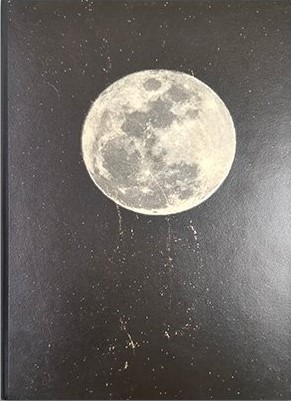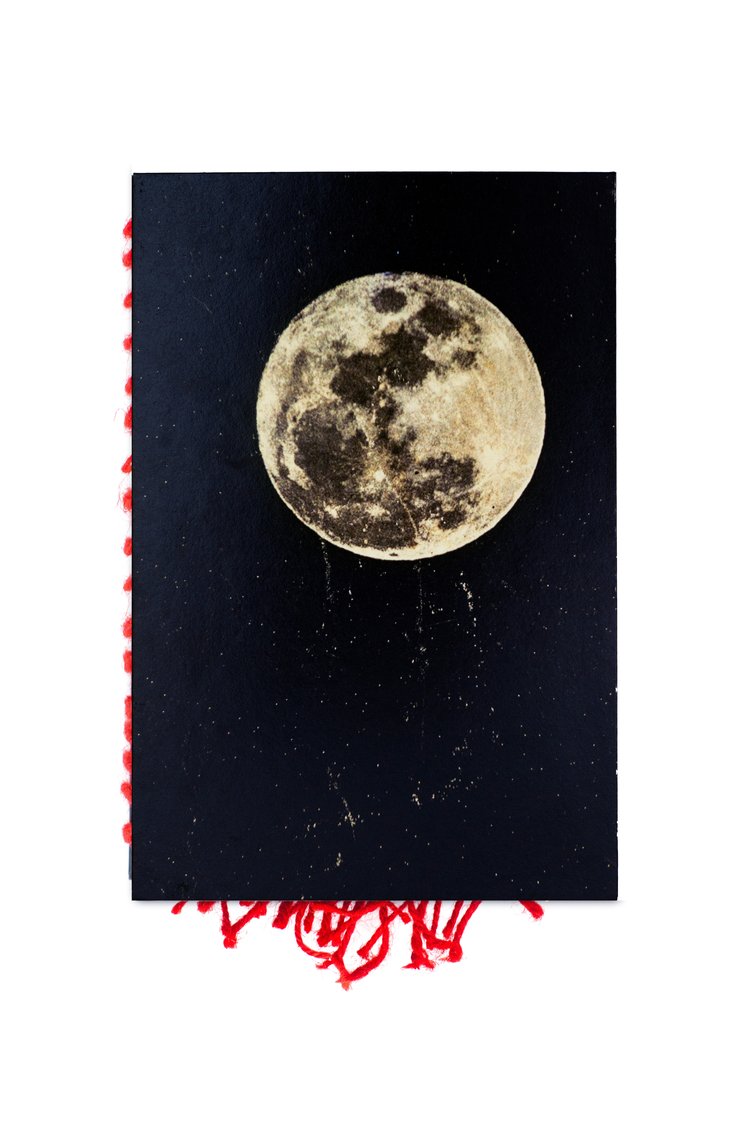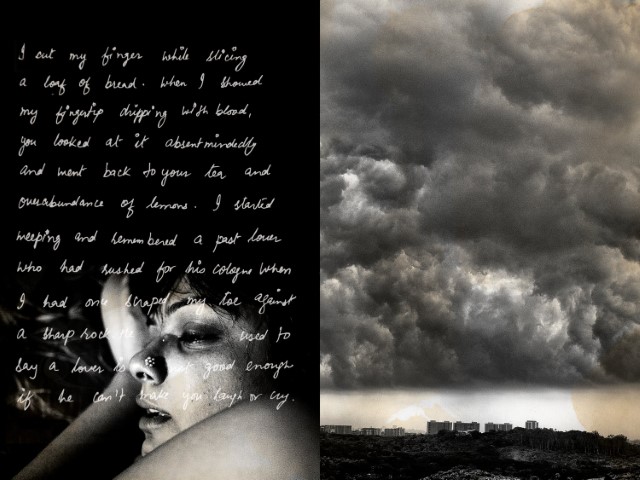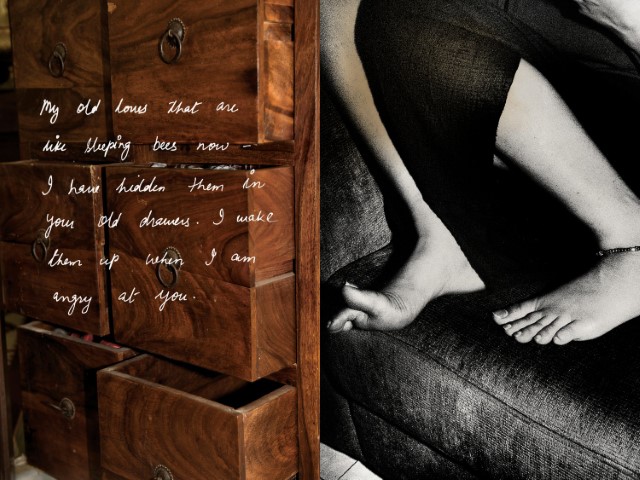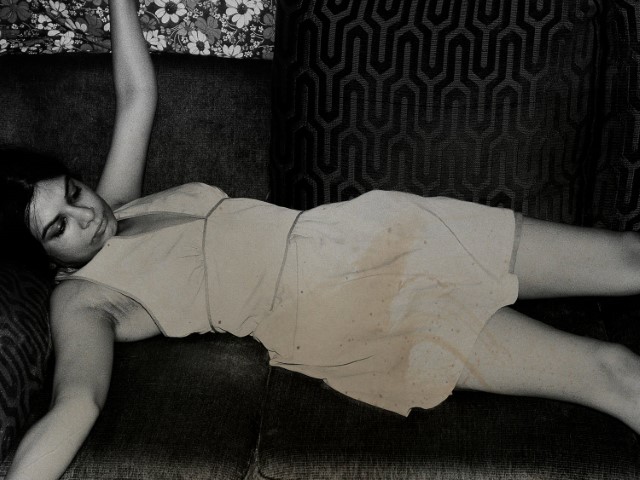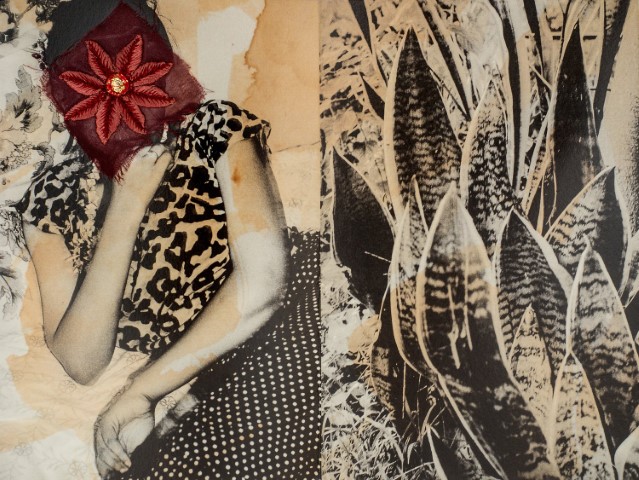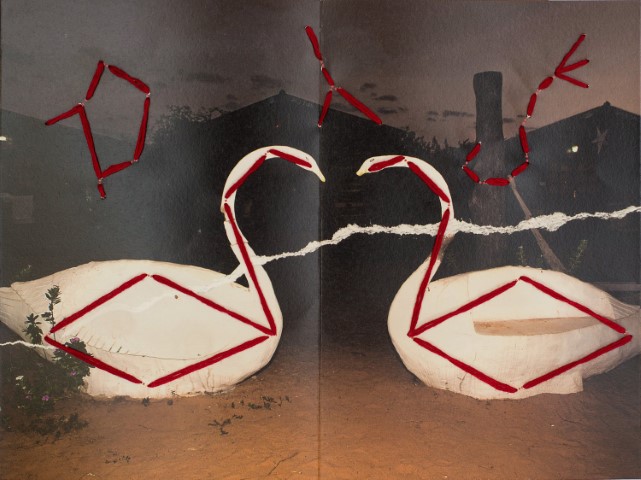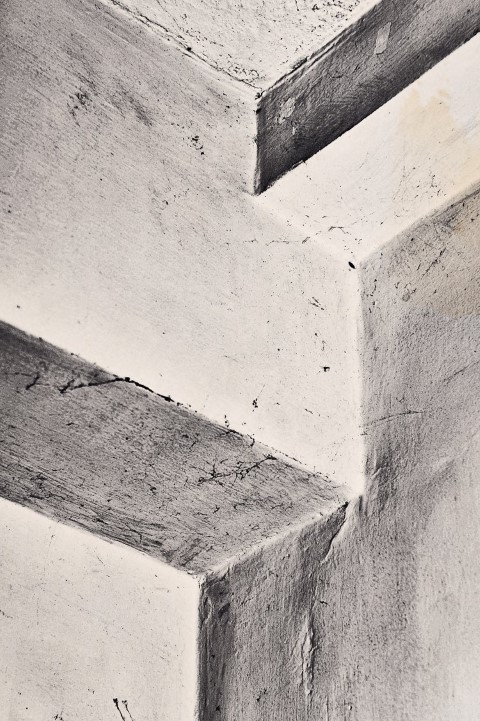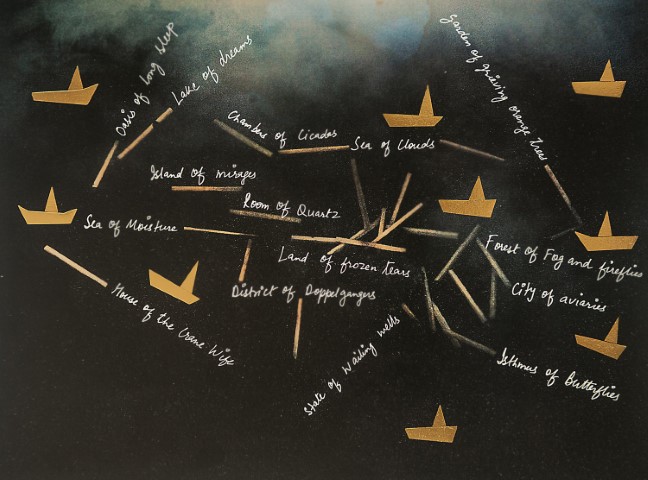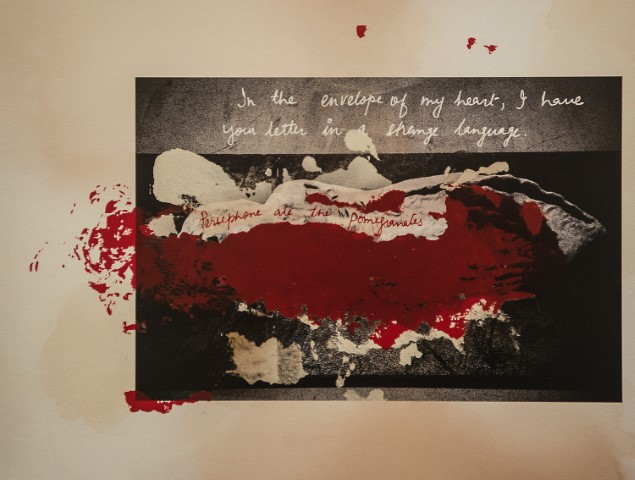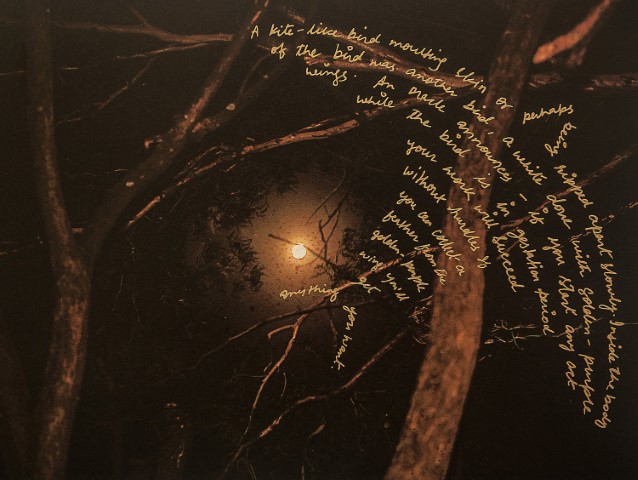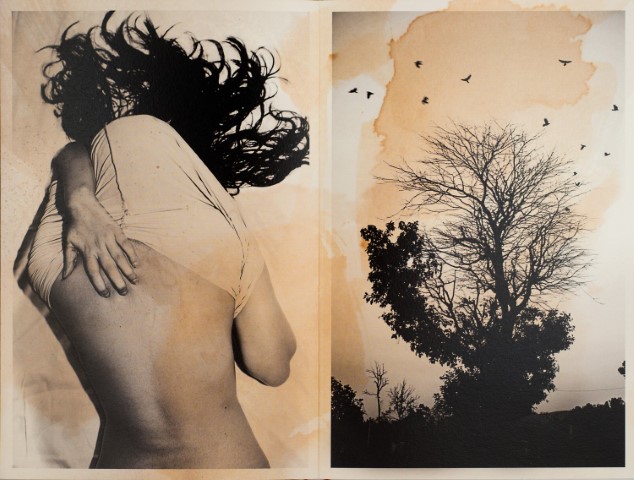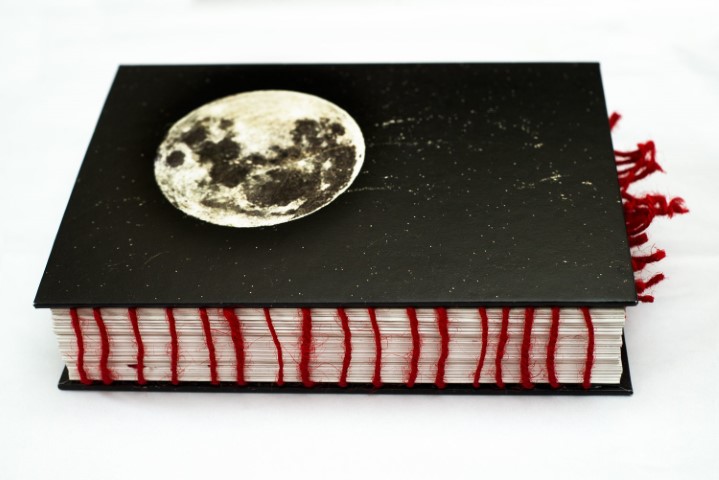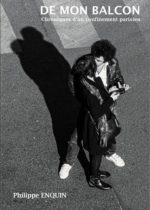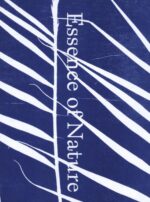1ère édition numérotée sur 500.
Ce corpus a été initié par Harikrishna Katragadda sur les expressions et les registres de l’amour à travers un protagoniste, sa partenaire Shweta Upadhyay. C’est une ode à l’entre-deux, l’intermède rempli de souvenirs d’amours perdus et de désir de réveil de l’amour. Il tente de capturer des façons de voir et de chercher son amant, le désir et le chagrin de chercher l’autre insaisissable dans les espaces autour. Le symbole suprême de la lune combine le désir de l’amant, le désir du monde et le désir de l’image. Le livre puise dans le genre du roman gothique avec des sous-entendus du surnaturel, des présences absentes, des espaces porteurs de peur et de désir, des secrets cachés, des présages et des oiseaux. Comme la lune qui indexe l’absence et la présence, l’intégralité et le vide – le personnage central du livre est une figure obsédante au bord de la disparition et de la réapparition subséquente. Le livre mêle également le regard du photographe à la voix du sujet. Par le marquage, l’effacement et la broderie, le but est de superposer les images pour faire ressortir les complexités du soi et des relations. Le sujet n’est pas passif mais répond et prend en charge son récit et le trempe dans la fiction, la fable, les souvenirs supprimés, les allusions, les présences fantomatiques, les secrets et les mensonges.
1st edition numbered on 500.
This body of work was initiated by Katragadda on the expressions and registers of love through a protagonist, his partner Shweta. It is an ode to the in-betweens, the interlude filled with memories of loves lost and a longing for the reawakening of love. It attempts to capture ways of seeing and searching for one’s lover, the desire and heartache of looking for the elusive other in the spaces around. The overarching symbol of the moon combines the desire for the lover, the desire for the world, and the desire for the image. The book draws from the genre of gothic romance with subtexts of the supernatural, absent presences, portentous spaces charged with fear and desire, hidden secrets, omens, and birds. Like the moon that indexes both absence and presence, wholeness and emptiness – the book’s central character is a haunting figure on the verge of disappearance and subsequent reappearance. The book also interweaves the gaze of the photographer with the voice of the subject. Through mark making, erasure and embroidery, the aim is to layer the images to bring out the complexities of the self and relationships. The subject is not passive but answers back and takes charge of her narrative and steeps it with fiction, fable, suppressed memories, allusions, ghostly presences, secrets, and lies.
Harikrishna Katragadda is a visual artist whose work explores communities, environment and personal memories using photography, text, drawings and references from cinema and poetry. His documentary work with Cyanotypes on the Ganga river pollution received the Invisible Photographer Asia Art Award in 2018.
Shweta Upadhyay is a writer and an artist who works with photographs. She employs erasure and defacement using text and fragments from her personal diary, and includes references from poetry, literature and cinema. She works as the Assistant Editor of ART India magazine.

